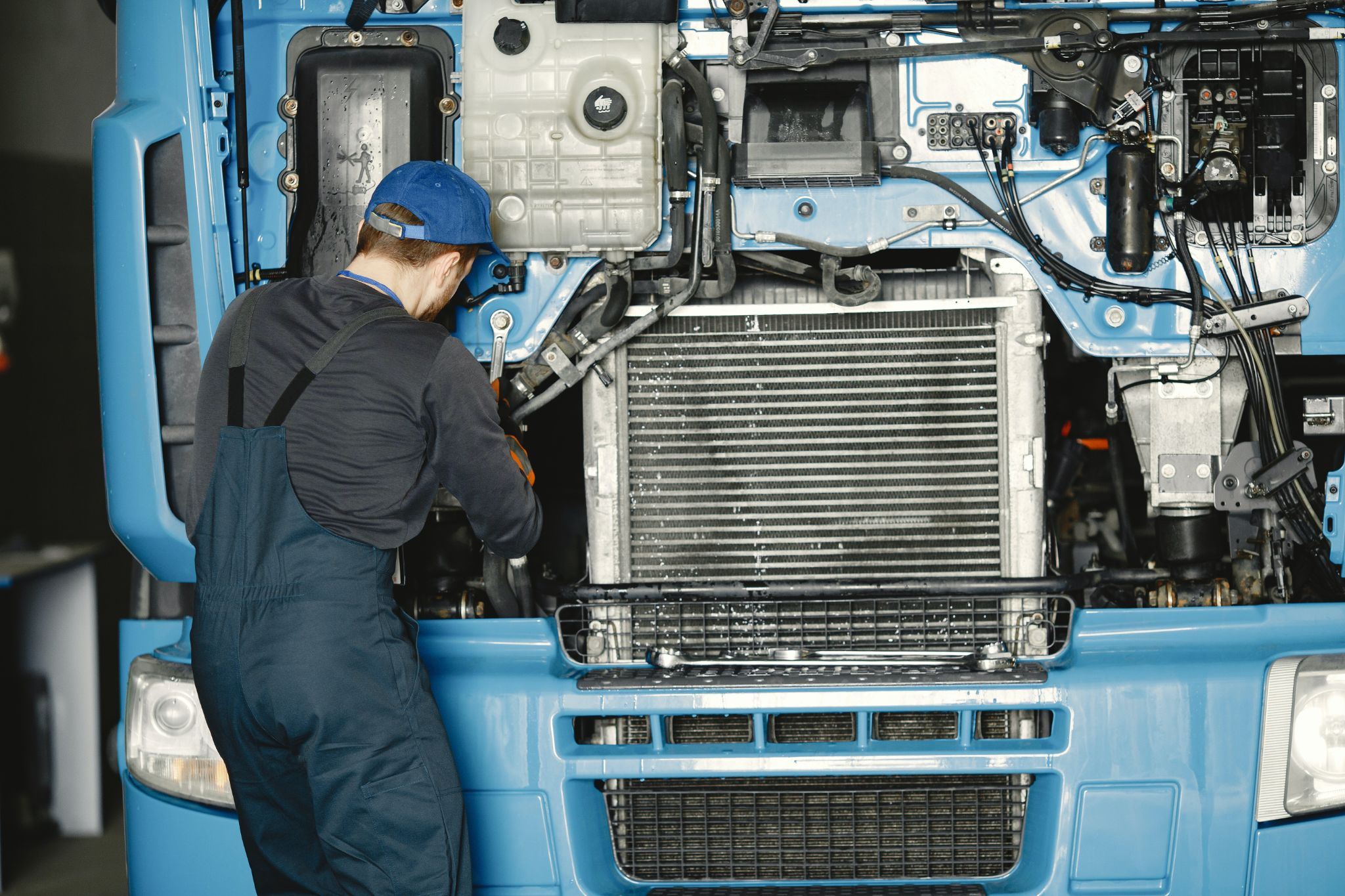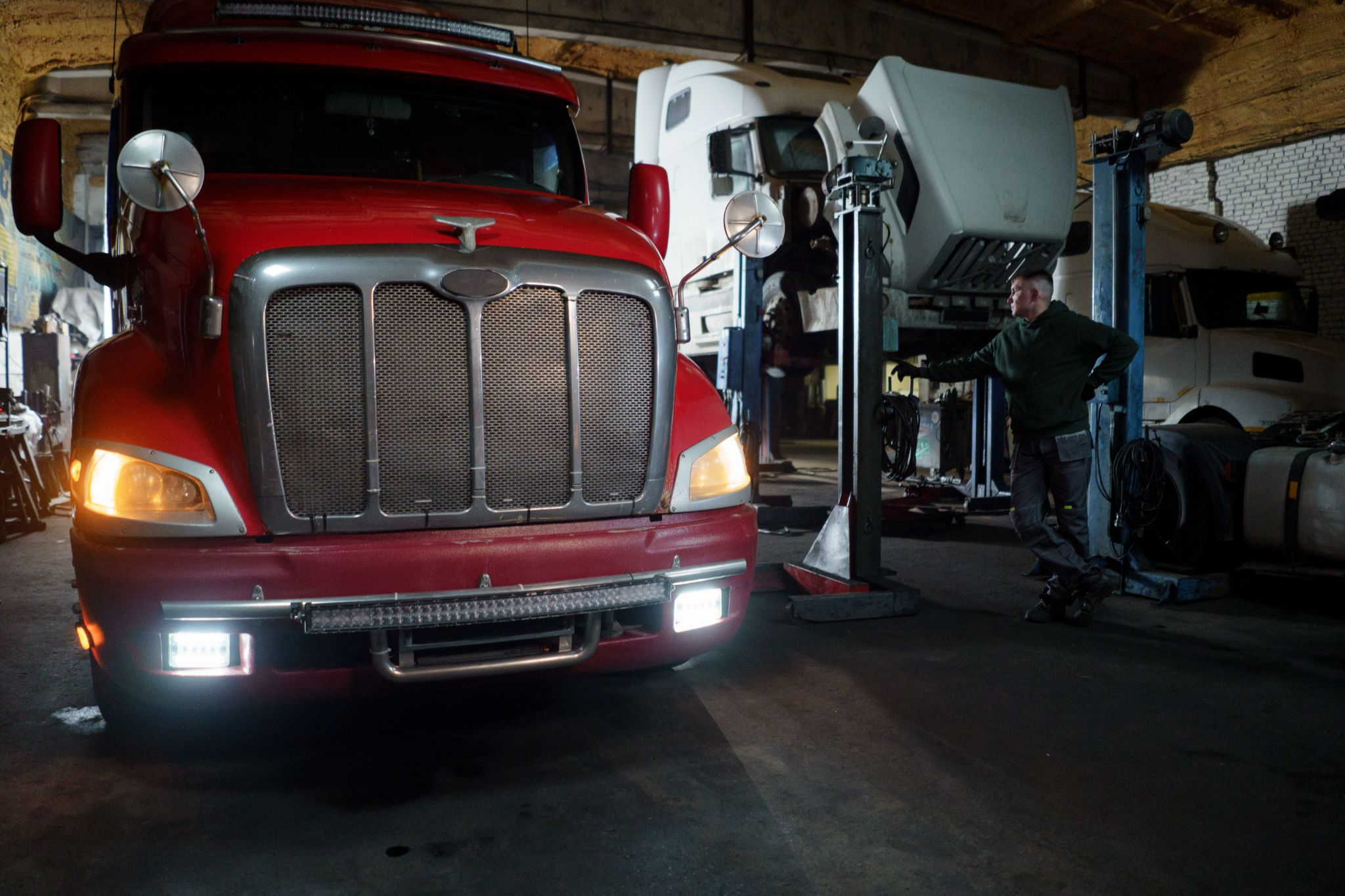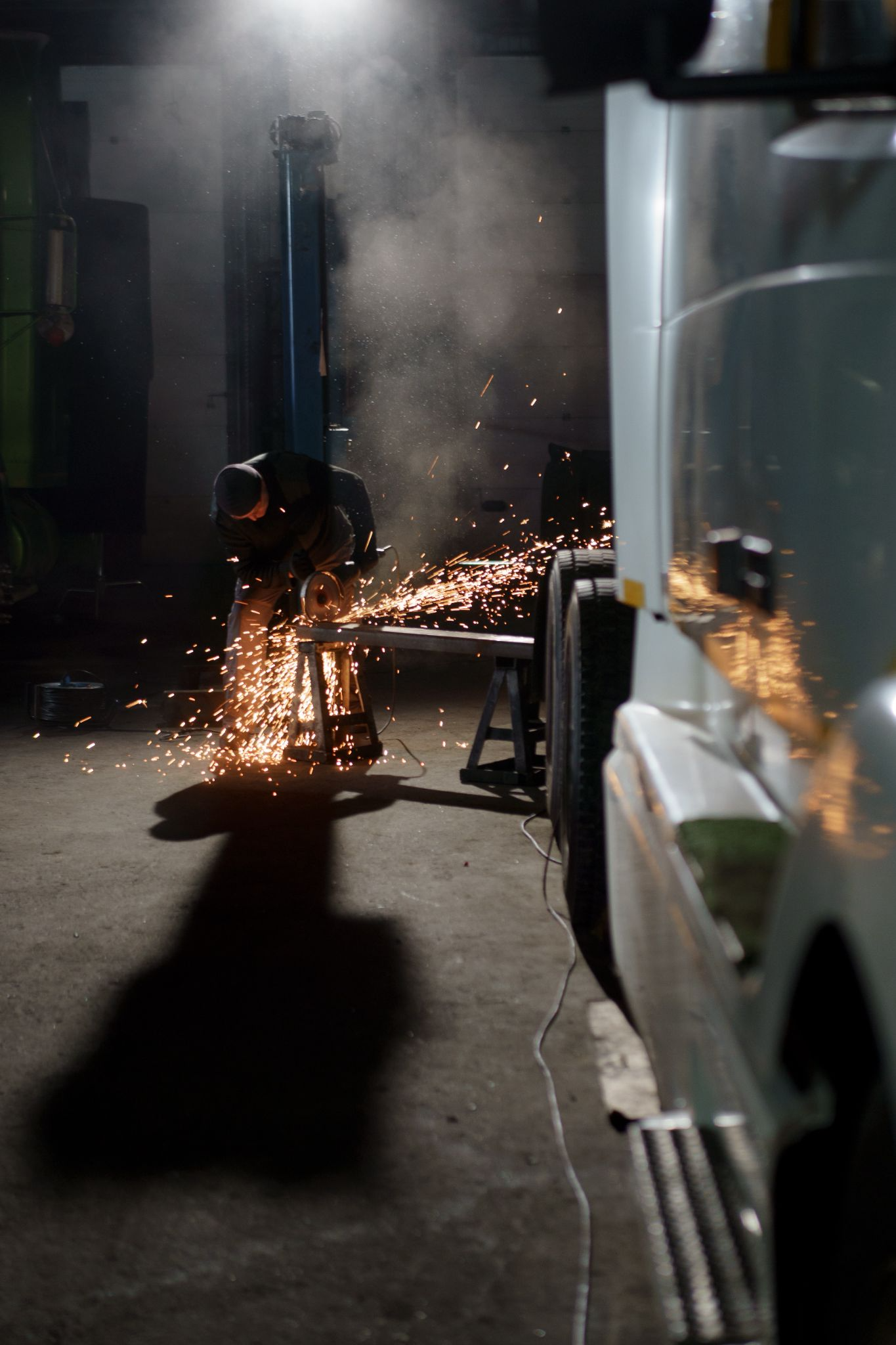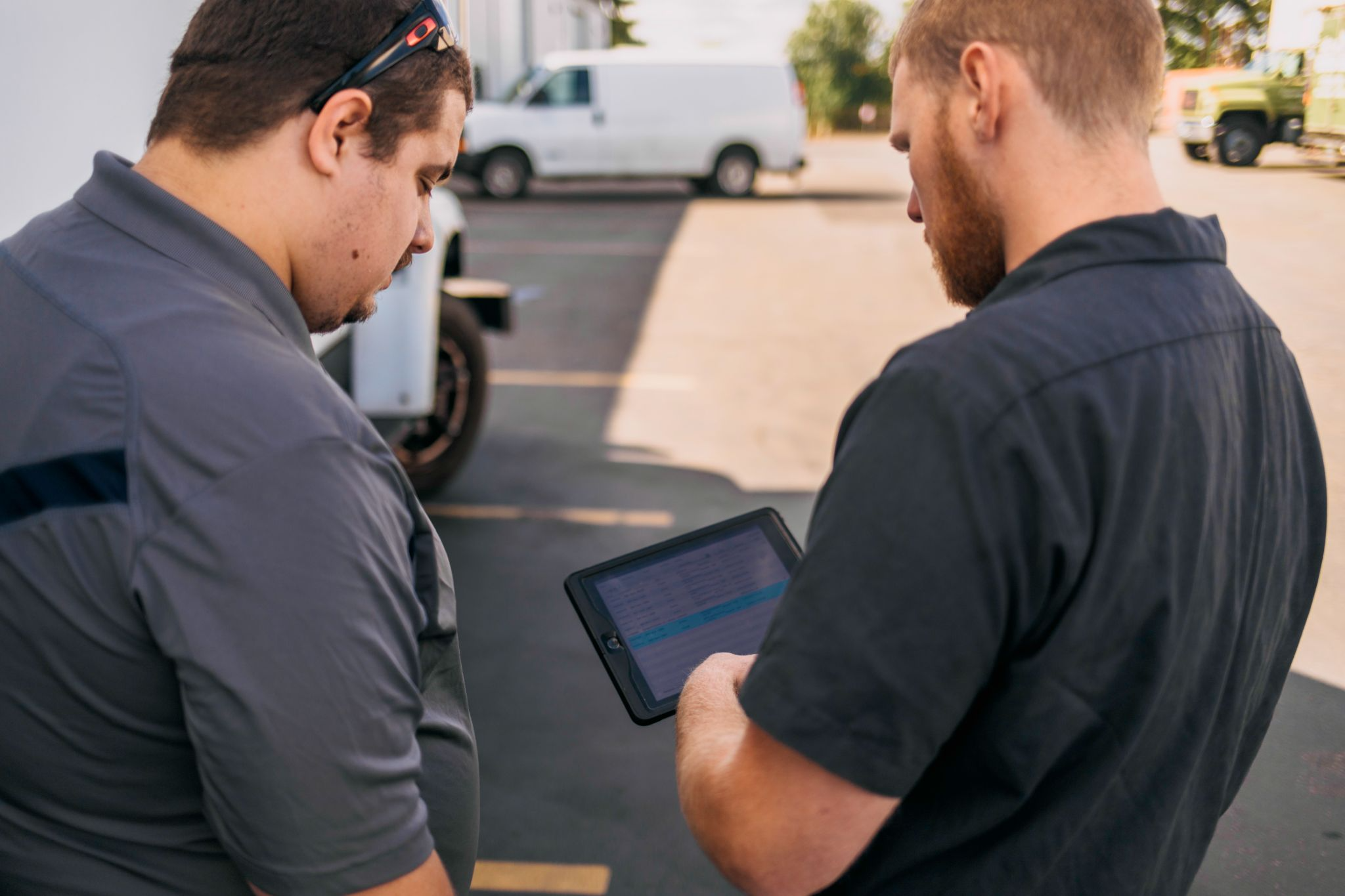
Every vehicle and piece of equipment needs maintenance and downtime at some point in its lifetime. While you can’t predict downtime on all your equipment, having a solid preventive maintenance (PM) plan will help you weather downtime and ensure your fleet is road-ready and prepared for action. After 20 years in the fleet management business, we at Equipment Experts, Inc feel we’ve learned a thing or two about PM services. We’ll show you our eight pointers for creating a PM program that keeps you and your team cruising smoothly and effortlessly year-round.
Preventive maintenance includes any type of regular, proactive care for fleet vehicles, equipment, and machines. Regular maintenance aims to reduce the chance that your equipment fails. PM specifically helps minimize unnecessary unplanned downtime and equipment failure.

Oh, but it is. Think of it this way: you wouldn’t skip a routine physical with your primary care or dare do so for your child and loved ones, right?
Think of preventive maintenance as a doctor’s check-up for your equipment. PM is the routine and regular care of fleet equipment. Preventive maintenance helps nip your equipment’s potential health issues in the bud before they become a reality (or liability).
Preventive maintenance is important because it helps keep your team’s equipment in peak condition so you never have to think about unplanned downtime, loss of productivity, or delays in work orders and your business services.
A strong preventive maintenance schedule includes inspecting, detecting, correcting, and finally, preventing problems before they become issues. A little upfront time and investment in predictive maintenance (versus reactive or run-to-failure maintenance) will benefit you and your team.

Did you know that a solid preventive maintenance program — versus a reactive or run-to-failure maintenance program — can save a facility as much as 18% in maintenance costs each year? There are many benefits to implementing a comprehensive preventive maintenance program.
Some of the benefits of implementing preventive maintenance on an annual, semi-annual, and monthly basis include:
Some people argue that there is such a thing as too much preventive maintenance. With the right systems and types of preventive maintenance and preventive maintenance schedules in place, preventive maintenance can only benefit your company.
Finding just the right amount of preventive maintenance — the sweet spot — just takes some trial and error and patient fine-tuning of preventive maintenance schedules and operations.

There are three types of preventive maintenance programs. PM programs are based on time, usage, and condition.
Time-based PM programs are based on the question, “How often do I need to conduct preventive maintenance on my assets?” Fleet managers who use time-based preventive maintenance schedules often schedule maintenance tasks on a weekly, monthly, or annual basis.
Scheduling with time-based PM means conducting preventive maintenance every “x” number of days, on the first of every month, or every three months. You can’t go wrong with any of these preventive maintenance schedules.
So long as you work out a routine schedule and system with your team’s input in mind, your PM program should serve you well, so that you and your team can continue to operate at peak capacity.
This type of preventive maintenance schedule is created with your assets — instead of time — in mind. Usage-based PM is any type of proactive maintenance conducted on critical assets to keep the condition of assets at their best.
When an asset hits a certain benchmark — let’s say 15,000 miles for a heavy-duty diesel semi-truck — a team using a usage-based preventive maintenance schedule might determine their diesel truck is ready for an oil change.
When a team focuses on critical assets and how much they’re used, they can help keep them in top shape and continue to analyze which vehicles consistently perform better than others at certain benchmarks, a topic for later in this article.

Condition-based what? Yes, we know; it’s a mouthful.
Condition-based monitoring is similar to a usage-based plan. It’s another proactive maintenance plan.
But the key difference between usage- and condition-based PM is in the thresholds and limits used to determine when PM is needed. With condition-based PM, the focus is less on how much an asset is used and more on the condition it’s in.
You can think of condition-based monitoring similar to your check engine light: when the check engine light turns on or shows signs of impending failure or decreased performance, it’s time to pump the brakes (literally and metaphorically) on operations. It’s time to bring the asset in for preventive maintenance services to prevent wear-and-tear — or gosh forbid equipment failure.
Condition-based monitoring works best when paired with computerized maintenance management software (CMMS). If you’re interested in learning more about preventive maintenance software, we discuss CMMS in our fleet manager series and fleet eBook (did we mention these online resources are free?).

An effective PM program and schedule start with the entire team’s input. Before creating a PM schedule, solicit your team’s input before making a PM-related decision.
At the very least, consult your technicians and your maintenance team. If you have time, consider checking in with upper management as well.
A PM schedule includes the following eight key steps:
Each step requires detailed attention and analysis. Taking the time to go through each step in detail will help your team pivot away from reactive maintenance and toward creating a successful preventative maintenance program.
As you go through these eight steps, you’ll want to follow the following maintenance tasks for each step. We’ll describe what tasks are included, starting with the first step.

A successful preventive maintenance program doesn’t come pre-built. In the beginning — as with any worthy goals worth pursuing — creating a strong PM schedule and plan takes persistence, time, focused effort, and energy.
Think about whether you want to reduce planned downtime, increase efficiency, increase the lifespan of your fleet’s costly heavy equipment, downsize your fleet, or reduce repair costs. Whatever you and your team decide, establishing your fleet team’s goals will help you decide which type of PM schedule and program you want to use.
After you’ve identified and set your goals, you’ll need to determine what resources you’ll need to implement your goals, and to whom each task will be delegated.
Planning takes time. But it pays off. You’ll be grateful you did.
A stronger, more productive, happier, and more durable team and fleet starts with establishing and prioritizing fleet goals.

Your maintenance team will be working on your fleet day in and day out. They’re on the front lines and can see what problems arise.
Costly mistakes happen when managers go without seeking input from their team. The result?
Without input from your team, you may find managing your fleet costs more because your business is less efficient, and your team is not communicating across channels to prepare for the unexpected.
Do your best to avoid these costly mistakes. Make sure to seek out input from your maintenance manager, your maintenance technicians, reliability engineers, and other key stakeholders to ensure your preventive maintenance plan works well.

Now that you’ve chatted and strategized with your team, it’s time to set SMART goals. SMART goals? Yes, SMART goals.
SMART goals are specific, measurable, attainable, relevant, and time-driven. They’re used to help create a detailed picture of exactly what you hope to accomplish for your preventive maintenance plan.
With your team, establish your key performance indicators (KPIs), and your must-have data you want to measure, test, and analyze throughout your PM program.

The most commonly measured preventive maintenance KPIs in a PM program include:
While not an exhaustive list, talk with your team. Decide amongst yourselves which KPIs matter and make the most sense to test, measure, and analyze for you, your fleet, and your business.
The more you practice setting SMART goals and combing through the results of your tests, the better your team will become at using and setting a winning PM plan. Pair the results of your SMART goals and KPI measurements with the right computerized maintenance management system (CMMS), and you and your team will be setting yourself up for a wealth of success.

An effective maintenance program isn’t complete without a system to house all your vehicle’s important information. Using the right CMMS can make the difference between a fully functioning or faulty preventive maintenance program.
With the rise of online management systems, CMMSs are changing the way fleet managers do business. Gone are the days of file cabinets and stacks of unwieldy papers, jumbled work orders, and dense intake forms.
CMMS can help you schedule maintenance, keep track of inventory, and report and organize work orders needed for your preventive maintenance program. There’s no one right CMMS to choose.
The best CMMS is a CMMS that takes into account the skillset of your team, budget, asset capacities, team preference, and comfort with data security. Once you agree upon the right CMMS, the next step in creating a solid preventive maintenance plan is to plug in your PM triggers into the software.
And voila! You’re ready to begin.
A preventive maintenance trigger is a sign or function on your vehicle and equipment that shows you and your team it’s time to conduct preventive maintenance on your critical assets. A successful maintenance program starts by noting the warning signs and triggers of your critical assets.
Once you and your team define your triggers, you’ll want to set up an automated scheduling system in your CMMS to help organize and execute your maintenance program. Maintenance managers can even set up mobile notifications through the CMMS to make the process simpler.
However you and your entire team define and divvy up your maintenance activities, your maintenance program should start by looking at manufacturers’ guidelines, the performance history of your assets, how much each asset is used and will be needed for production, and the overall cost of repairs versus replacing the asset (in the case of equipment breakdowns).
An effective PM program works just like your well-oiled machines. When your program is in sync, you’re more likely able to diagnose your vehicle, increase asset reliability, reduce repair expenses, and track progress throughout the process.

You’ve purchased a CMMS, discussed it with your team, and set up PM triggers and KPIs. Well done! You’re now ready to create a checklist to manage your asset inventory.
Prioritize the inspection of your assets by keeping a checklist of which assets need servicing, how often, and for which triggers. Doing so will help you sync up your asset data and KPIs with the maintenance activities performed on the shop floor.
As you track these metrics, make sure you pick a time to sit down with your team and identify whether you’re meeting the goals you set for the preventive maintenance program. Regular data analysis will help you and your team fix issues with your maintenance plan before they become full-blown emergencies.
The difference between preventive and reactive maintenance lies in creating checklists and conducting routine maintenance to prevent issues from blowing up and becoming headaches for you and your entire team.

You now know how to create a preventive maintenance program. You have maintenance resources and software, are dialed into your CMMS’ advanced reporting capabilities, and know how to schedule maintenance to create a reliable maintenance operation.
But does your team feel confident in manning the preventive maintenance ship without you, their trusted captain?
Once you feel you have all the bells and whistles and ship’s masts, (if we’re using that metaphor) of your maintenance process in place, invest in and pass along the information to your team. Teach them what to look for when implementing your maintenance plan.
Properly managing and training a fleet team will benefit your company in many ways. Teach them about what makes an effective maintenance program.
When your team knows how to perform maintenance tasks and track asset data with your maintenance software, your team will be able to reduce costly repairs because they understand — and can implement — your vision for your maintenance processes.

Once you’ve finished creating your new and successful preventive maintenance program, the last step in creating an effective preventive maintenance program is to analyze the results of your program.
Use data from sensors, work order notes, and digital reports to measure the strengths and weaknesses of your program. Whichever way you decide to measure the results of your maintenance program, trust that you’ll refine your goals over time.
If you’re not successful this month, don’t lose hope. You’ll improve for next month — and in time, as your success grows — you’ll wonder how you ever went without planned recurring maintenance in the first place.
Don’t hesitate to share examples or maintenance processes that worked for you and your team. If you share your wins with upper management, you’ll stand a greater chance at increasing your operations and maintenance budget — all of which will help you and your team be more profitable, lucrative, and efficient with your maintenance tasks.
Make sure to also share your estimated return on investment (ROI) and maintenance goals for the next fiscal quarter and year with upper management. Being open and transparent with your processes will help build trust and open doors for future conversations to improve all your work processes.
When it comes to keeping your fleet in tip-top shape, preventive maintenance success starts with being proactive. Being proactive can help reduce equipment downtime, save you and your company time and money, and keep overall maintenance costs low. We know it may be tempting to brush off the value or necessity of having an effective preventive maintenance program.
But it takes just one serious equipment accident — one period of unplanned downtime — to realize how important regular equipment inspections are for the health of your fleet.
For additional resources about preventive maintenance programs, don’t hesitate to reach out!
Short on time? You can view other helpful preventive maintenance tips with our handy, 2-minute-and-under fleet management series here.
Wherever your journey takes you, know that the Experts are here. We’d be happy to help.
